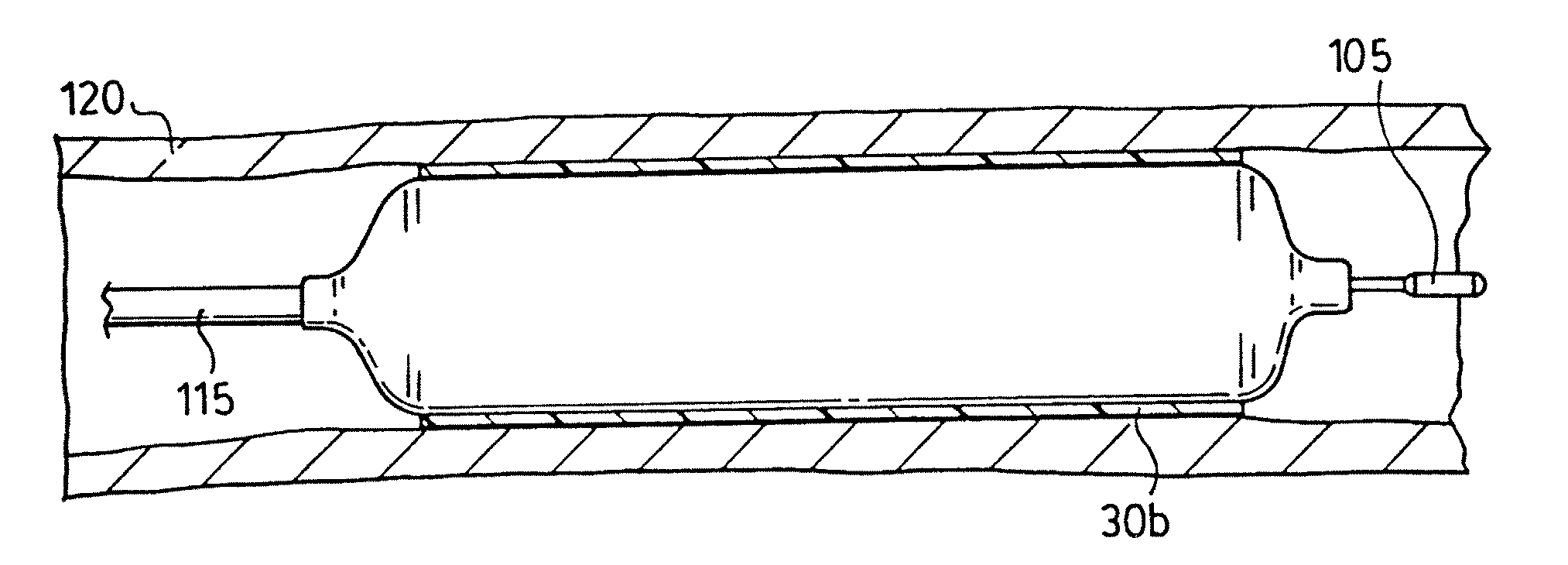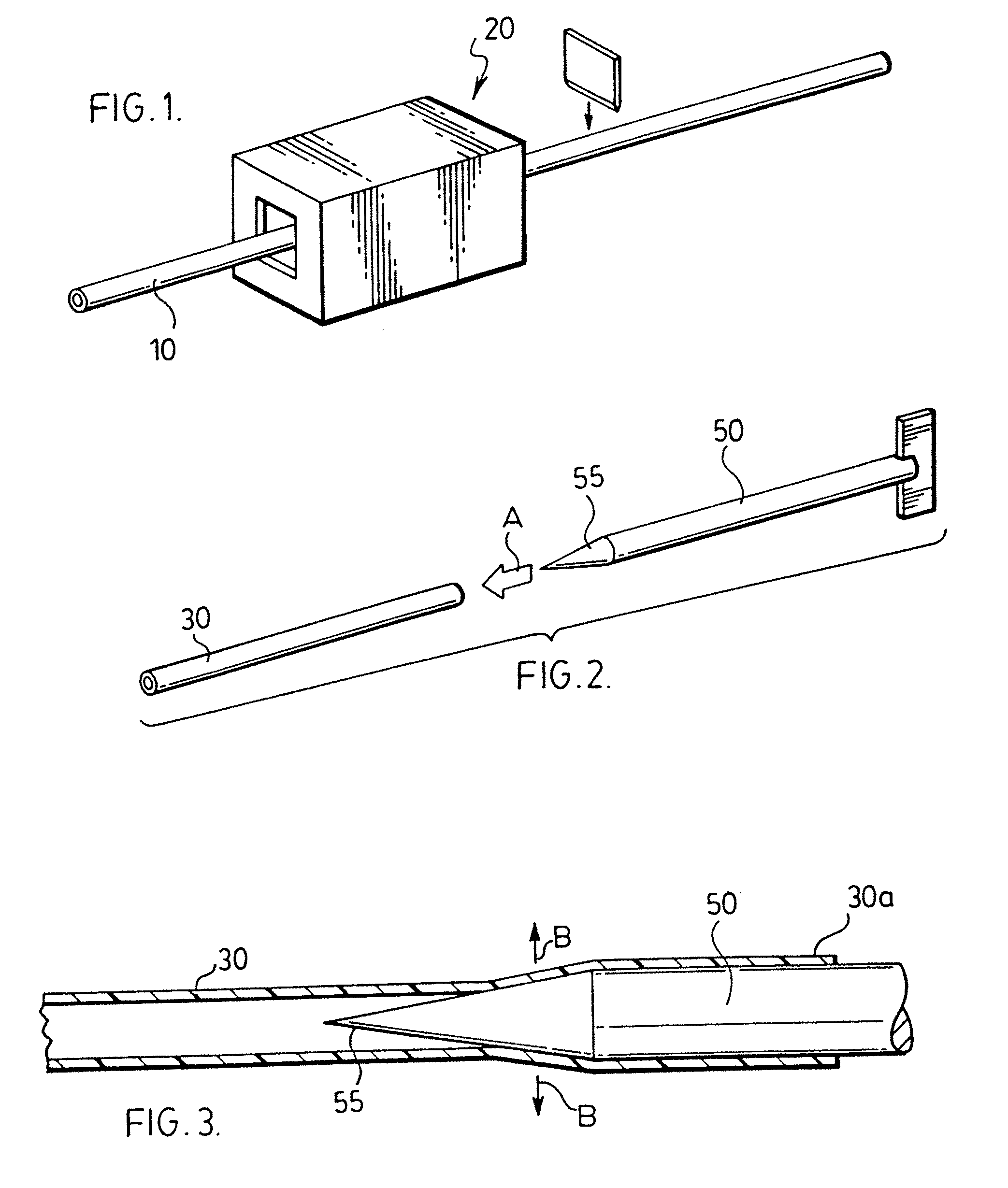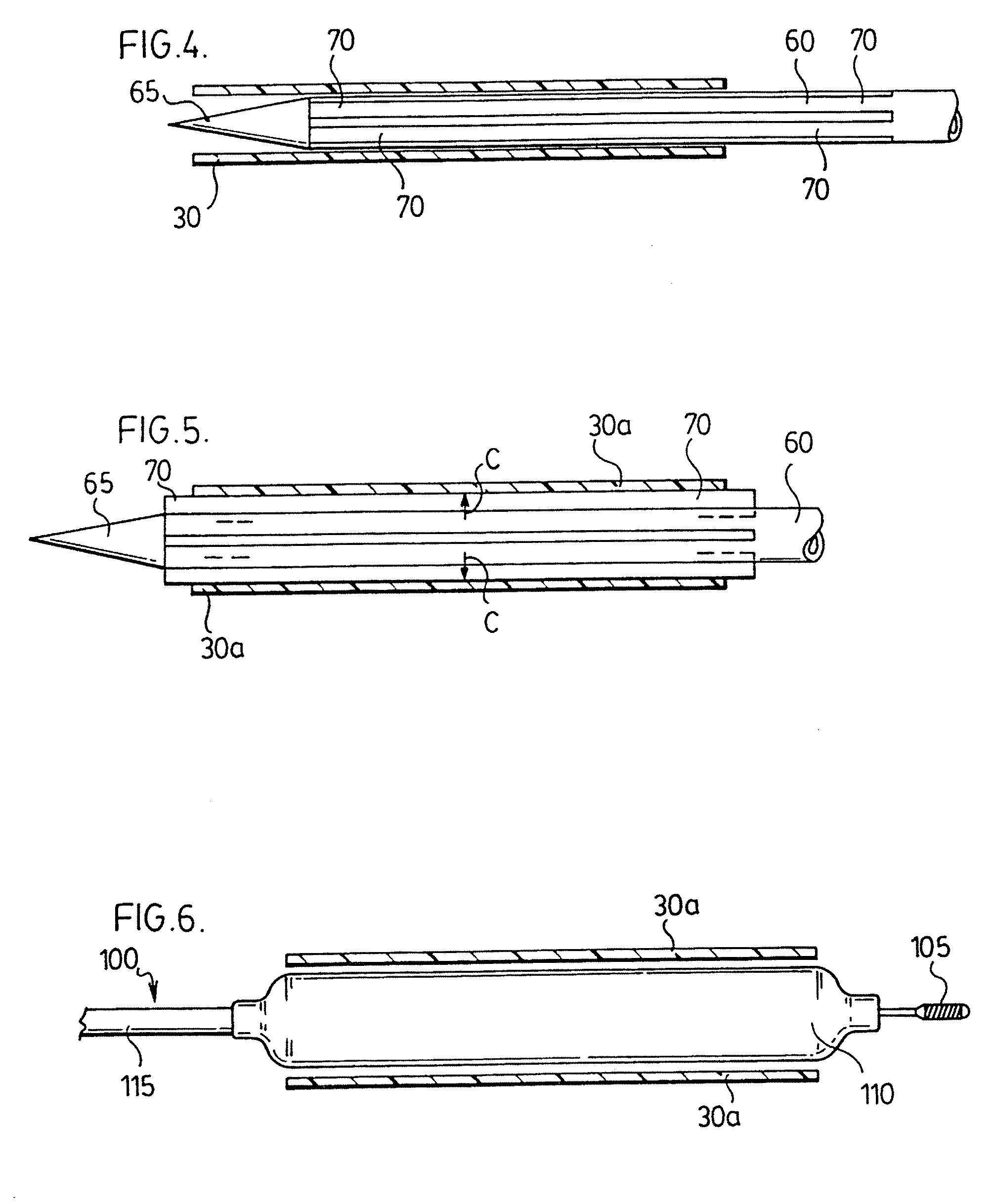Small vessel expandable stent and method for production of same
a small vessel and expandable technology, applied in the field of expandable stents, can solve the problems of poor radial rigidity of the stent and elastic limit of the material
- Summary
- Abstract
- Description
- Claims
- Application Information
AI Technical Summary
Benefits of technology
Problems solved by technology
Method used
Image
Examples
Embodiment Construction
[0038] The specific design of the porous surface is not particularly restricted. Preferably, in the unexpanded state, at least two of the struts meet at the intersection point to define an acute angle.
[0039] In the context of the present stent, various repeating patterns in the porous surface of the tubular wall are particularly advantageous. Generally, the preferred repeating pattern is a plurality of intersecting members arranged to define a first repeating pattern comprised of a polygon having a pair of side walls substantially parallel to the longitudinal axis, a concave-shaped first wall having a first apex and a convex-shaped second wall having a second apex, the first wall and the second wall connecting the side walls. Preferably, at least one, more preferably both, of the first apex and the second apex is substantially flat. The first apex and the second apex may be of the same or different length.
[0040] Preferably, the side walls comprise longitudinal struts disposed subs...
PUM
 Login to View More
Login to View More Abstract
Description
Claims
Application Information
 Login to View More
Login to View More - R&D
- Intellectual Property
- Life Sciences
- Materials
- Tech Scout
- Unparalleled Data Quality
- Higher Quality Content
- 60% Fewer Hallucinations
Browse by: Latest US Patents, China's latest patents, Technical Efficacy Thesaurus, Application Domain, Technology Topic, Popular Technical Reports.
© 2025 PatSnap. All rights reserved.Legal|Privacy policy|Modern Slavery Act Transparency Statement|Sitemap|About US| Contact US: help@patsnap.com



